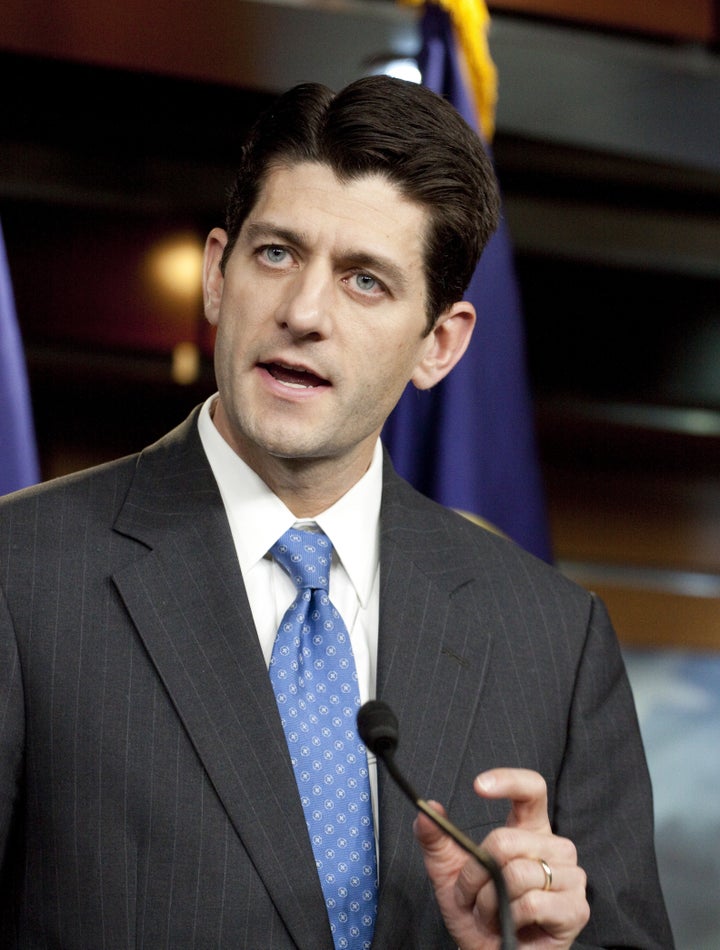
Last Thursday, House Budget Committee Chairman Paul Ryan (R-WI) and House Appropriations Committee Chairman Hal Rogers (R-KY) unveiled their budget for the remaining months of the fiscal year. A new allocation cutting and capping appropriations levels will be entered into the Congressional Record early this week. There will be no vote on the magnitude of the cut; new House rules enacted in early January effectively approved this budget before it had been written.
Ryan's backdoor budget resolution would cut non-security discretionary (NSD) spending, which excludes Defense, Homeland Security, and Veterans Affairs and military construction appropriations, back to 2008 levels for the remaining seven months of the fiscal year. (After Senate Republicans filibustered an omnibus appropriations bill in December, Congress passed a continuing resolution holding funding roughly at 2010 levels through March 4.)
Relative to the President Obama's budget, the Ryan rollback would mean a $58 billion reduction in appropriations (seven-twelfths of the promised $100 billion cut). While $58 billion is not a large amount of savings compared to the deficit--only 4% of the 2011 deficit, and less than 2% of total spending as projected by the Congressional Budget Office -- it represents a larger 12% reduction to the small NSD budget. But even this understates the severity of the cut because it would only affect agency funding for seven months. The proper measure of a reduction to these funding levels is on an annualized basis, in which this cut actually represents a 21% reduction in spending relative to the president's NSD request.
Relative to 2010 enacted levels, the Ryan budget would cut $43 billion from NSD spending, an 18% cut for the remaining fiscal months. Yet programs have already seen a real funding cut, as appropriations have not kept up with inflation and population growth.
The cuts, however, are not evenly distributed, and cushioning some agencies from the budget ax means others will suffer even greater relative cuts. House Appropriations Chairman Rogers released 302(b) appropriations subcommittee allocations, which show how Ryan's funding cut would affect the 12 appropriation bills. Transportation, Housing and Urban Development, and related agencies face the biggest relative hit, with proposed funding at 17% below 2010 enacted levels. Relative to 2010 enacted non-emergency budget authority, transportation investment would see a $3.6 billion cut for the remainder of the year, assuming an across the board cut. Commerce, Justice, Science, and related agencies appropriations bill also got walloped with a 16% cut relative to 2010 enacted levels. If cuts are proportionally distributed, the Department of Justice and the National Science Foundation would see funding cut by $3.8 billion and $1 billion, respectively, for the remainder of the year. Freezing spending at 2008 levels in 2012 would require cuts almost twice as large.
Security spending is proposed at $635 billion, which falls $16 billion below the president's request but $8 billion above 2010 funding levels. Relative to 2010, only the Defense appropriations bill would see an increase in funding. Homeland Security would be held roughly at current funding levels, while the Veterans Affairs and military construction appropriations bill would be cut back by $2 billion. The security programs would collectively see an $81 billion boost (+15%) relative to 2008 enacted levels.
All told, the Ryan budget would reduce discretionary spending by $35 billion relative to 2010 enacted levels and $78 billion relative to the president's request. This symbolic gesture of fiscal responsibility would have devastating consequences in key public investments and human needs programs, and is dwarfed by the $374 billion added to this year's deficit from the tax deal enacted last December. The Center on Budget and Policy Priorities calculated that the two-year extension of the upper-income tax cuts and estate tax giveaway will cost $139 billion relative to the president's proposal -- roughly twice the budgetary impact of Ryan's spending cuts.
With unemployment still above 9%, employment 6% below pre-recession levels, an economy roughly 6% below potential, and grim forecasts of a slow recovery -- the very reasons given for passing tax stimulus in December -- immediate spending cuts would impede recovery. Yet even once the economy has regained its strength, the non-security discretionary spending cuts do not come close to offsetting the extensions of all Bush-era tax cuts. Indeed, Ryan's own comprehensive budget plan -- the Roadmap for America's Future -- would cause the public debt to soar for decades to come by pairing spending cuts with expensive tax cuts heavily tilted towards the rich (including the elimination of all taxes on corporate and investment income).
According to CBO's January baseline, making permanent the Bush-era income, estate, and gift tax provisions (as modified by the tax deal) and indexing the AMT to inflation would add $4.6 trillion to deficits over the 2012-21 period ($3.8 trillion outright, plus $795 billion in debt service), increasing cumulative deficits by 66% over this period. The bill of regularly enacted tax extenders would add another $950 billion (including debt service) to deficits over this period.
Massive unfunded tax cuts explain much of the accumulation of debt over the last decade; the non-security discretionary budget is not the culprit of today's deficit or the country's unsustainable long-term fiscal outlook. Until we break from these untenable tax policies, looking only to this narrow sliver of the budget for deficit reduction will be a fruitless exercise with painful consequences.